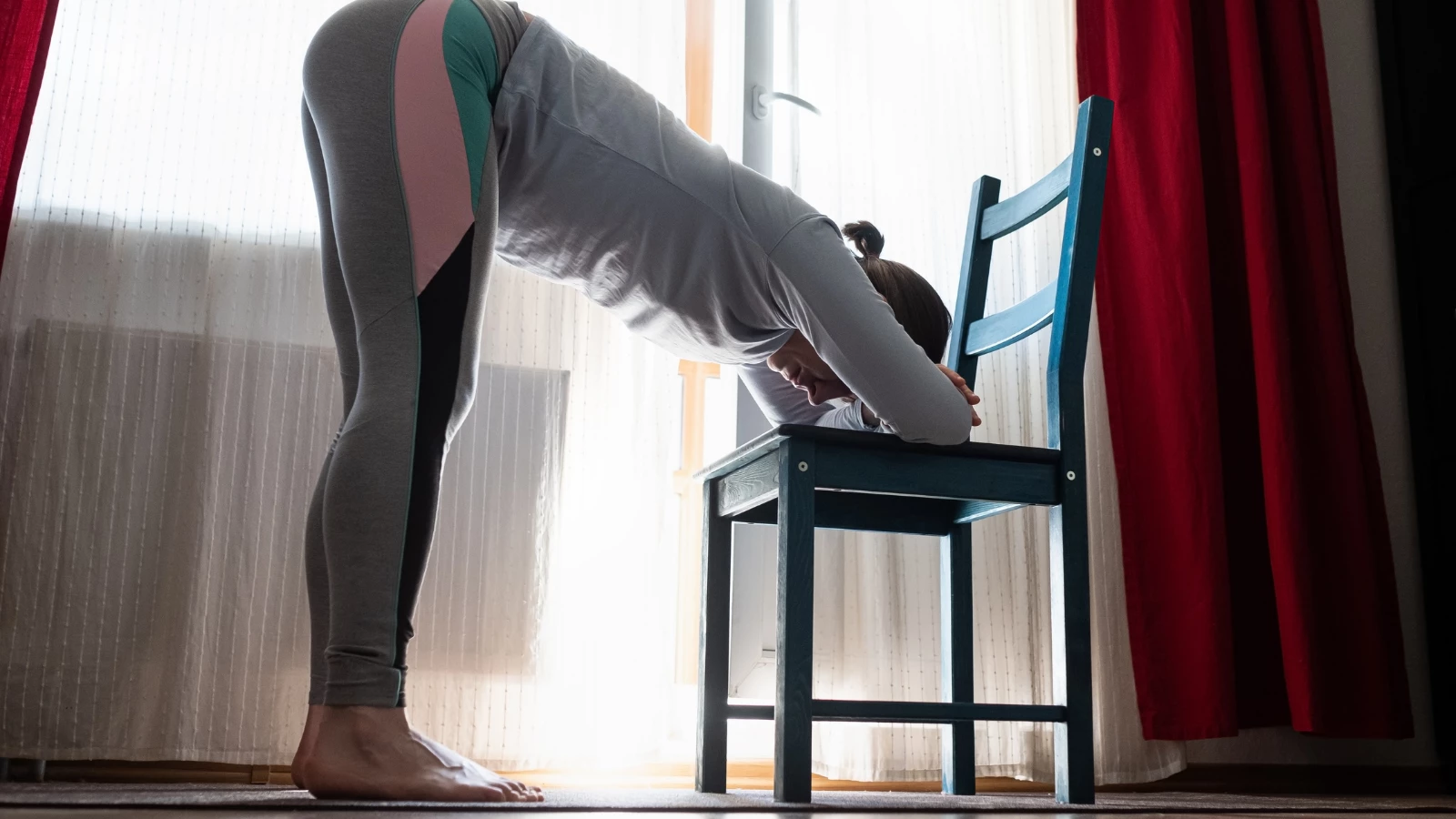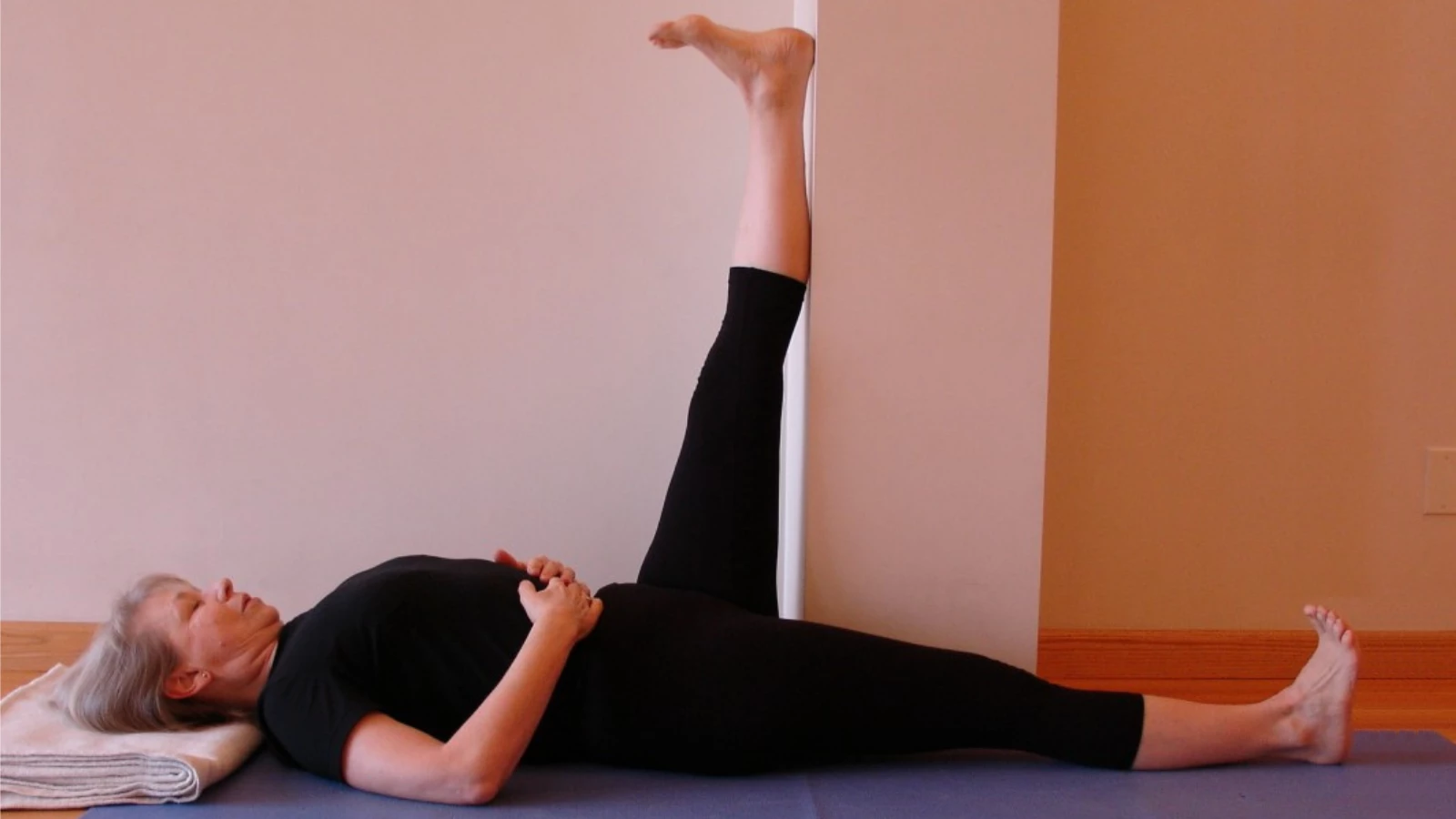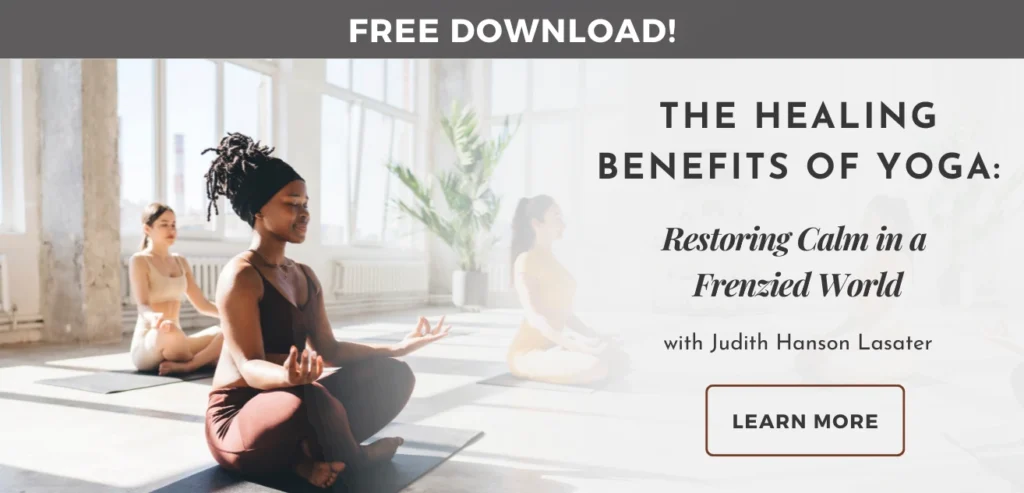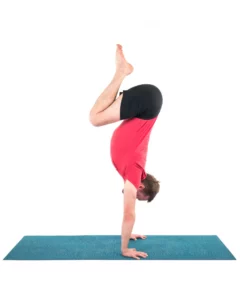Tight Hamstrings? Try This Supported Yoga Stretch

Tight hamstrings can make all kinds of yoga poses challenging, if not impossible. But the good news is, there are lots of ways to create more length in your hamstrings in yoga practice.
If you love hamstring stretches, go ahead, knock yourself out. Here are a few of yoga’s most popular ones:
- Reclining Big-Toe Pose (Supta Padangusthasana) with a strap
- Downward Facing Dog Pose (Adho Mukha Svanasana), one leg up the wall
- Standing Forward Bend Pose (Uttanasana)
- Seated Forward Bend Pose (Paschimottanasana)
- Extended Hand-to-Big-Toe Pose (Utthita Hasta Pandangusthasana) with your foot on a chair back or without support
If you loathe hamstring stretches, here’s my top pick.
It has three big advantages:
- You get to lie down.
- You can’t hurt your back.
- There’s a good chance you might find that magical spot known as your working place, and come to love stretching your hamstrings.

If this seems unlikely, may I suggest that this is because most people with tight hamstrings have never found their working place in a hamstring stretch and don’t know how it feels. In your working place, you can breathe, keep your face soft, keep your eyes soft, and stay, observing without reacting.
In a yoga class, if your hamstrings are tight, you are already in pain long before you look anything like the classic pose. Finding the beginning of your stretch means backing off, a lot, and staying there. As you remain in a position that gives you some stretch but keeps you out of pain, you’ll finally experience the sweetness of a moderate hamstring stretch. The tightest hamstrings in the world can’t resist that.
How to Enjoy Stretching Your Hamstrings in Yoga

(Your buttocks could easily be two feet away from the wall as a starting point)
- Find a column or a doorway that allows you to lie on your back and have one foot resting on the column. Place a folded blanket under the back of your head to relax your neck and shoulders.
- To find the right distance from the wall, look for the spot where your pelvis rests on the floor. Check the outer hip of your lifted leg. If it rolls up and in, you’re too close to the wall. Your buttocks might easily be as far as two feet from the wall.
- First, activate the leg that’s on the floor. Press out through the ball of your big toe. Pull your kneecap toward your upper thigh. Firm your front thigh muscle and press your thigh bone down to the floor.
- The leg that’s up the wall does exactly the same thing, only in a different relationship to gravity. Press through your big-toe mound. Pull the front thigh muscles toward your hip crease. Press your thigh bone toward the wall. The more you contract your front thigh muscles, the more your hamstring will stretch.
- Relax your neck and shoulders. Soften your face. Soften your eyes. Maintain a steady, friendly awareness of the sensations in your raised leg. When the feeling of stretch diminishes—perhaps over a period of days or weeks—move your buttocks closer to the wall.
- Stay for two minutes on each side. Then switch to your other side. Most of us are not symmetrical from one leg to the other. So you may need to scoot your hips closer or further away from the wall to find your working place on your second side.
Also, read...
Stand Firm: 6 Easy Balancing Moves for Your Daily Yoga Routine
The Many Benefits of Twists: 5 Great Yoga Postures for Low Back Health
Desk-Friendly Yoga Neck and Shoulder Stretches
Related courses

Eve Johnson taught Iyengar Yoga for 18 years before being introduced to Spinefulness in 2016. Convinced by the logic, clarity, and effectiveness of Spinefulness alignment, she took the teacher training course and was certified in July 2018. Eve teaches Spineful Yoga over Zoom and offers an online Spinefulness Foundations course. For course information, go to http://spinefulness.ca.



